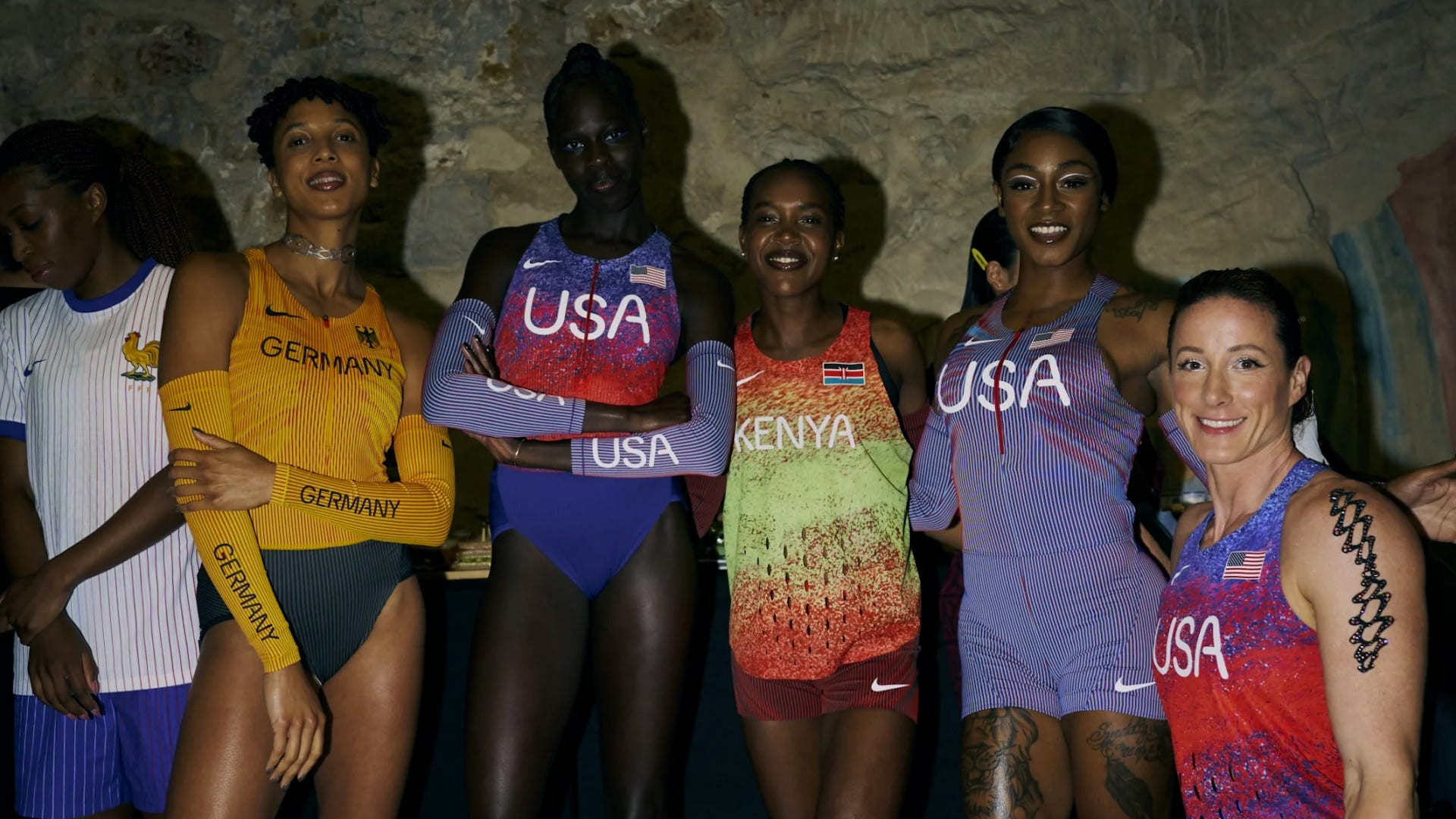Nike’s unveiling of the uniforms for Team USA’s track and field athletes for the upcoming Paris Olympics has ignited a significant online controversy. The core of the debate revolves around the design of the women’s uniform, which some critics deem excessively revealing, while others champion athlete choice and performance considerations.
 Nike Olympic uniforms controversy
Nike Olympic uniforms controversy
The controversy erupted after Citius Magazine, a prominent running publication, shared the first glimpse of the Nike kits intended for the U.S. track and field team at the Paris 2024 Olympics. The image showcased a blue and red striped leotard emblazoned with “USA,” designed for women athletes. This design immediately drew sharp criticism across social media platforms, with numerous commenters and athletes expressing concerns that the uniform was simply too skimpy.
Nike has addressed the burgeoning criticism by referencing a published article detailing their design approach for the Olympic uniforms. In this article, Nike asserts that the 2024 Paris Olympic track and field uniforms are their most “athlete-informed, data-driven and visually unified” collection to date. They emphasize that each kit is designed to reflect the unique identities and diverse communities represented by each nation and sport. Nike states their primary objective was to empower athletes by providing uniforms that catered to their needs for choice, comfort, and peak performance. They maintain that this goal was achieved across all sports for which they designed uniforms, including track and field.
According to John Hoke, Nike’s chief innovation officer, the Paris 2024 track and field kits are designed to offer athletes a wide array of silhouettes tailored to accommodate various sporting disciplines, body types, and sizes, with a strong emphasis on performance and maximum breathability. Nike highlights that there are nearly 50 distinct track and field uniform options available, encompassing the now-controversial leotard, for both men and women athletes. Furthermore, athletes are granted the autonomy to select the outfit or combination of outfits that best aligns with their personal style and preferences.
Anna Cockrell, a track and field athlete, provided a supportive perspective in a news release, stating, “I’ve had the opportunity to share feedback and insights that helped inform the new USATF Kit. During testing, this fit allowed me to move freely and without distraction, and I love how the look represents Team USA.”
However, numerous athletes have voiced strong disapproval of the uniform design in online comments. Queen Harrison Claye humorously inquired about sponsorship from a waxing service, highlighting the perceived revealing nature of the uniform. Jaleen Roberts expressed concern about potential exposure during athletic movements, stating, “This mannequin is standing still and everything’s showing… imagine MID FLIGHT.” Angello Malefakis criticized Nike for treating women as “second class citizens” with the uniform design.
Lauren Fleshman, a former track and field athlete, reposted the uniform image, questioning the enthusiastic support for such a kit from WNBA or NWSL teams. Fleshman argued that women’s athletic kits should prioritize both physical and mental performance. She contended that if the design truly enhanced physical performance, male athletes would also wear it, dismissing the uniform as a “costume born of patriarchal forces” rather than an elite athletic kit.
In contrast, some athletes have defended the Nike Olympic uniforms. Sinclaire Johnson reassured critics that the uniform bottoms appear different on a real person, based on her experience in kit testing. Katie Moon echoed this sentiment, emphasizing the availability of “at least 20 different combinations of a uniform” and the option to choose the men’s kit if preferred. Moon also expressed personal preference for less fabric in hot and sweaty competition conditions, concluding that athletes should have the autonomy to choose their competition attire, whether it be minimal or more concealing.
The Nike Olympic uniforms controversy underscores the ongoing dialogue surrounding athlete attire, balancing performance needs, personal choice, and societal perceptions of appropriate athletic wear. While Nike emphasizes athlete feedback and design versatility, the strong reactions highlight the diverse opinions within the athletic community and the broader public regarding the aesthetic and functionality of women’s Olympic uniforms.
